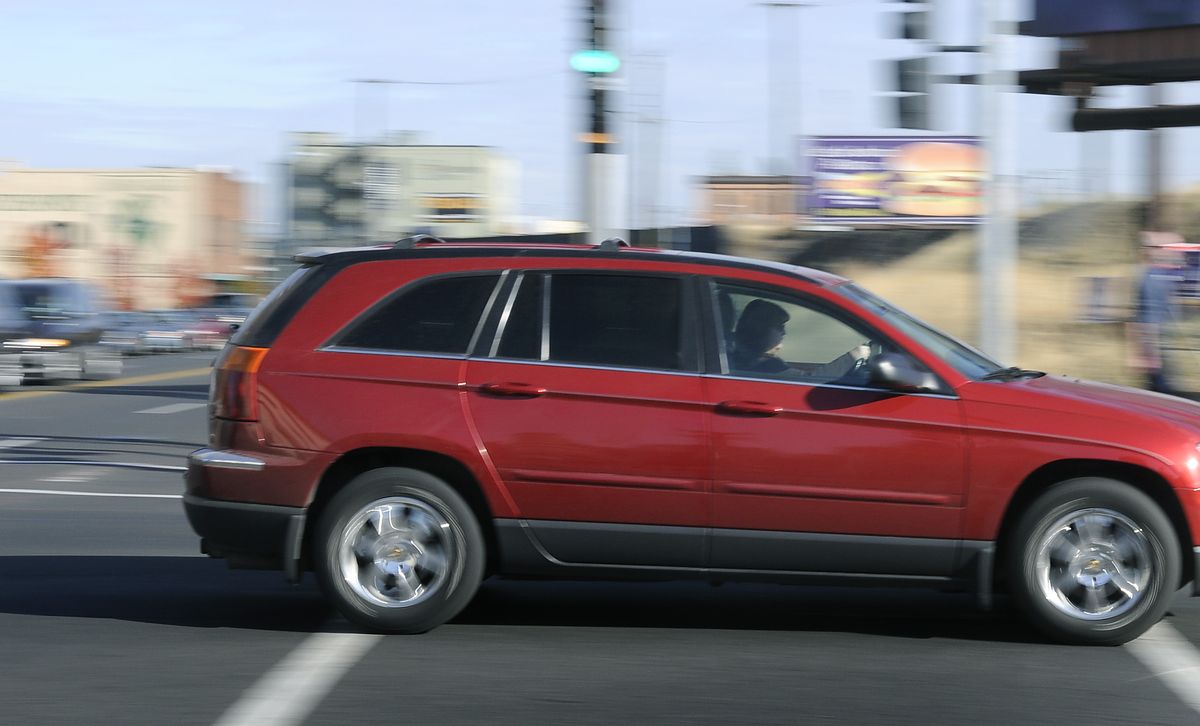Spokane program threatened
If I-985 passes, city would lose funding to operate red light cameras

Spokane’s red light camera enforcement program could soon get a red light of its own.
City officials say the city may dump the cameras if a state initiative, backed by antitax activist Tim Eyman, is approved by voters.
That’s because under Initiative 985, cities would lose money they generate through camera enforcement programs to a state fund that would be devoted to reducing traffic congestion.
Leaders from several cities across the state have criticized the initiative, citing the loss of local control and of money collected from infractions caught on camera. Other opponents of the law include companies that benefit from camera programs. The largest contributor to the campaign against 985 is Signal Electric, a Kent company that installs street lights, cameras and other traffic equipment.
Opponents of the initiative argue that red light cameras make streets safer. Pulling the revenue from the tickets away from the city means officials would have to use other tax money to support the program, said city spokeswoman Marlene Feist.
Money from red light cameras would be a small portion – likely less than 10 percent – of the money raised for the traffic decongestion fund under Eyman’s proposal. He argues that Spokane’s warning that the camera might have to be unplugged is another sign that red light programs have been created to generate revenue.
“Under our initiative, they have no profit motive for red light cameras,” Eyman said. “Now they will truly analyze which intersections truly does it help and which ones does it maybe hurt, and only put up the cameras at those intersections where it will actually make things better.”
Feist said Mayor Mary Verner would gladly argue to keep the cameras, if the initiative simply took the profits. The problem is, Feist said, it also would take away the revenue it would use to cover program costs.
Former Spokane City Councilman Brad Stark noted that Spokane’s enforcement rules divert any profits from the cameras to a fund to pay for neighborhood traffic-safety projects.
“It’s ludicrous to think that traffic fines in Spokane should be going to support Seattle projects,” Stark said.
Spokane’s red light program is so new that the city has yet to issue a traffic ticket from one of the cameras installed recently at three intersections. Red light runners caught this month are receiving warning letters in the mail. Starting Nov. 1, violators will be sent $124 tickets.
Earlier this year, Spokane hired Arizona-based American Traffic Solutions to run its cameras. Spokane is paying the company $4,600 a month for each camera; some intersections have multiple cameras. In its first year of operating red light cameras, Seattle generated more than $1 million. City officials announced this year that injuries decreased even though the number of accidents didn’t and that they would more than triple the number of cameras.
A 2005 federal study often cited by opponents and supporters of camera enforcement found mixed data related to the safety benefits of the programs. It compared crash data before and after installing cameras in seven jurisdictions. While collisions caused by drivers running red lights decreased by 379 with the cameras, rear-end crashes increased by 375, the study found. Researchers concluded that the cameras can be beneficial because side-impact crashes tend to be more severe.
No on I-985, the group that formed to fight the initiative, has raised about $160,000.
A quarter of that is from Signal Electric. American Traffic Solutions, the company running Spokane’s cameras, gave $10,000 to the cause.
“These people want to see the business of the cameras left available to them in Washington state and if this initiative passes there will be very few red light enforcement cameras installed in Washington state, and the losers will be traffic safety,” said Doug MacDonald, Washington’s transportation secretary from 2001 through 2007.
Jerry Vosberg, vice president of Signal Electric, said the company’s $40,000 contribution was not motivated by the potential of lost profit. He said installation of camera enforcement equipment is a small portion of the company’s business.
Josh Weiss, spokesman for American Traffic Solutions, said the company contributed money in solidarity with communities it serves. He noted opposition not only from city leaders but from groups such as Greater Spokane Inc.
“It would take a violator-funded program that it is today and make it another taxpayer-funded program,” Weiss said.
Money raised by the group opposed to the initiative pales in comparison to the amount collected by reducecongestion.org, the Eyman group backing the initiative. It has gathered $520,000 and has borrowed an additional $150,000, according to the state Public Disclosure Commission. Eyman said the loan is from a second mortgage on his home.
The top donor to reducecongestion.org is Michael Dunmire, a Woodinville businessman who often backs Eyman proposals. He has given $285,000 to the effort.
The second largest contributor is the Eyman group Voters Want More Choices. Records indicate that that group is completely funded by Help Us Help Taxpayers, the organization that pays Eyman a salary to work on initiatives. More than two-thirds of the money raised by Help Us Help Taxpayers came through a $100,000 donation from Dunmire.